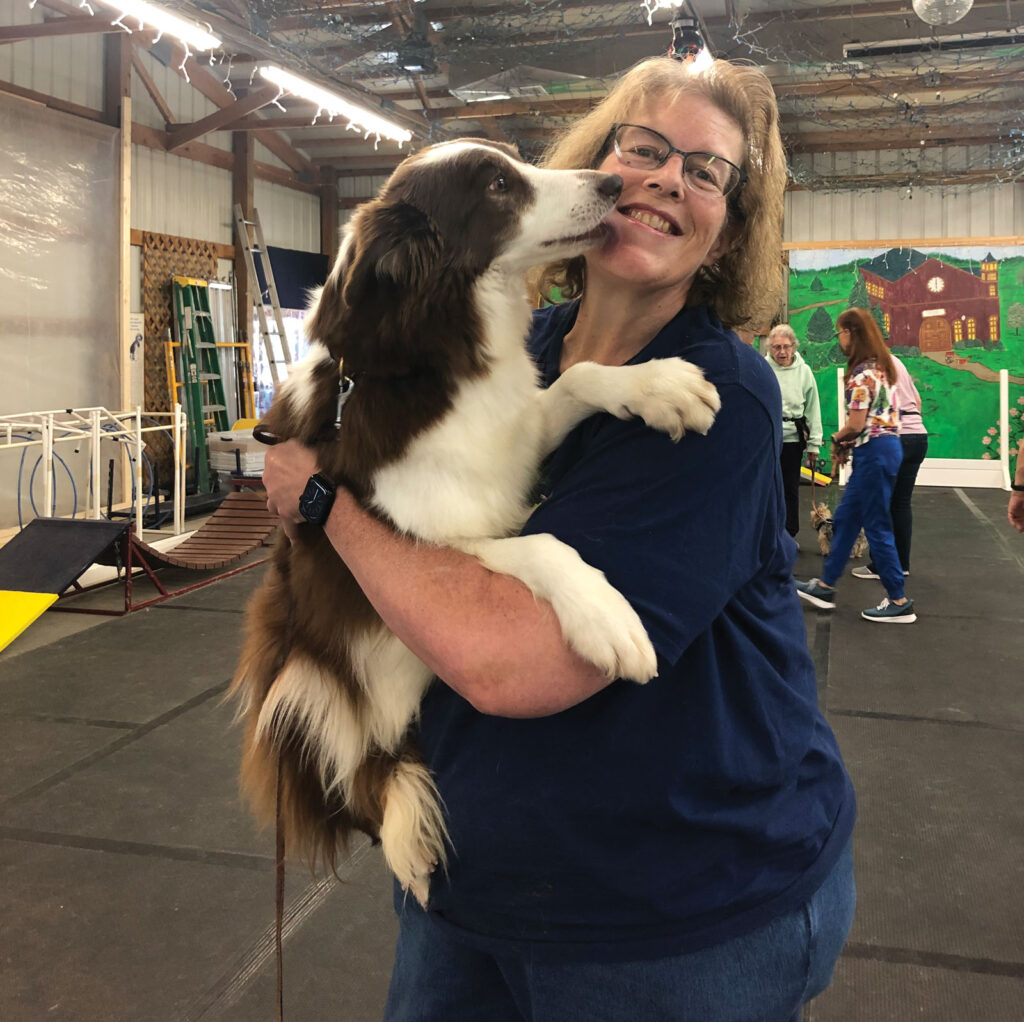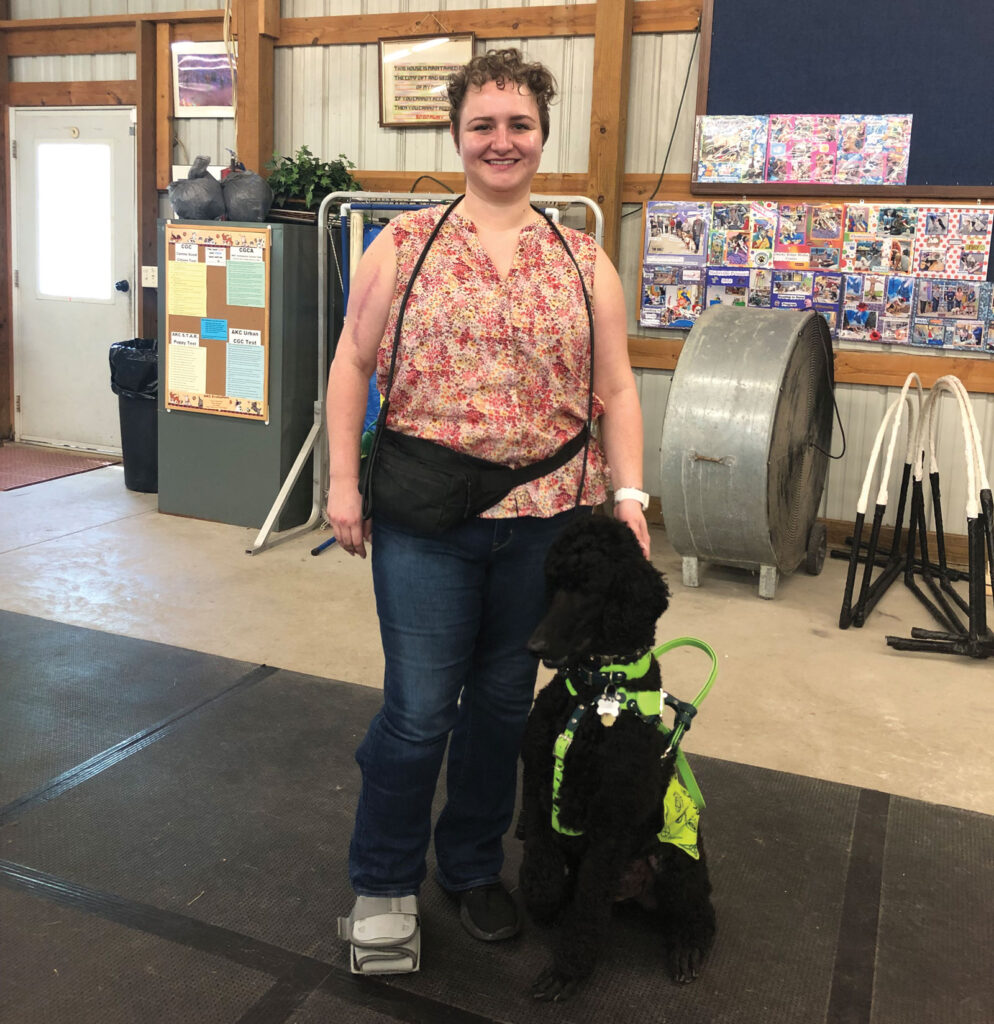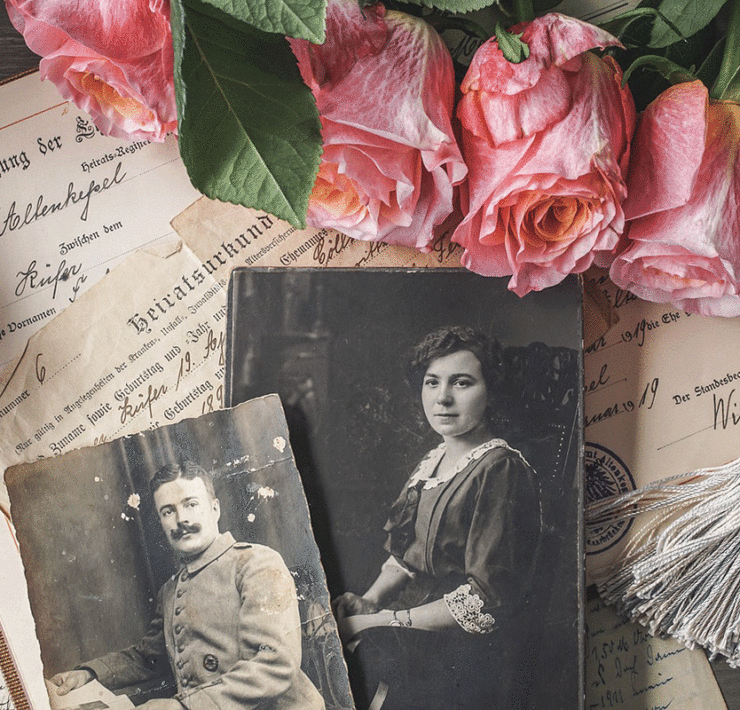Compassionate Canines
- "Compassionate Canines" originally appeared in the June 2024 "Animal" issue of COMO Magazine

Unleashing a dog’s potential.
In the Beginning
The domestication of canines began some 15,000 years ago, transforming dangerous predators into productive workers and comforting companions. What we don’t know, exactly, is when humans discovered that this combination could tangibly enrich our lives.
A fresco depicting a blind man led by a dog was discovered among the ruins of the ancient Roman city, Herculaneum (which, along with Pompeii, was destroyed and buried in ash when Mount Vesuvius erupted in 79 A.D.). Various ancient wood carvings and Chinese scroll paintings show similar scenes. Fast forward to the 1750s and we find the earliest known formal instruction of service dogs in a Parisian hospital for people who were blind.
Little is known about the move towards harnessing the compassion and trainability of dogs from the 1750s until around the end of the eighteenth century when a blind Austrian man, Josef Reisinger, trained a spitz and then a poodle to lead him. The dogs were so well trained that people accused Reisinger of faking his blindness. Several decades later, in 1819, another Austrian, Johann Wilhelm Klein, published one of the first known manuals for coaching guide dogs.
Jumping over an ocean and forward a century, the trajectory lands in the U.S. in 1929. Dorothy Harrison Eustis, a dog breeder and trainer, traveled overseas and saw a blind man successfully navigate the busy streets of Potsdam, Germany, with the guidance of his dog. She was fascinated and wrote an article about it in the Saturday Evening Post, drawing the attention of a young blind man, Morris Frank. Together they opened the first American guide dog school, The Seeing Eye, which still operates today in Morristown, New Jersey (seeingeye.org).
Service Animals
Canine compassion, humility, and plain old smarts have paved the way for dogs to serve the mere mortals among us who have needs that differ from the help a guide dog provides. In 1975, those possibilities came to light when canine researcher, Dr. Bonnie Bergin, traveled abroad where she witnessed donkeys that aided people with disabilities. Inspired by what she saw, Bergin returned to the U.S. and opened Canine Companions for Independence.
Bergin was instrumental in distinguishing service dogs in the Americans with Disabilities Act, and in 2001, her institute became the Bergin University of Canine Studies, the first facility of higher education in the world to offer an Associate of Science Degree in Human-Canine Life Sciences and Assistance Dog Education.
Now follow the canine history compass to Columbia, Missouri, where Ann Gafke, owner of Ann Gafke’s Dogschooling, refers to the highly trained nature of service animals as “obedience on steroids,” because training service and therapy dogs begins with obedience. Gafke relates one particularly memorable incident in which the dogs-in-training and a group from the local 4-H club stood in a line with their backs to a silent helicopter.
When the helicopter started up, the humans ran. The dogs stayed. They had not been given permission to leave.
Once obedience of this caliber is mastered, the training gets specific to the needs of the handler. These canines can be trained to be the ears of a hearing-impaired individual. They can be trained as seizure or narcolepsy alert animals whose task is to alert their human when they sense an impending seizure (up to an hour in advance) or narcolepsy attack. While they can’t stop a seizure or their human from sudden sleep, dogs can be trained to protect them during a seizure or a fall. Dogs can serve as allergen alert animals that warn their handler when a specific allergen is nearby or in a food their handler is about to eat. They can also be trained to alert someone who has diabetes when their owner’s blood sugar creeps close to the danger zone.
Some dogs are trained as psychiatric service animals. These canines help manage mental and emotional disabilities such as PTSD, chronic depression, or anxiety. Colonel Cliff Grantham, a decorated Vietnam veteran, has had his Labrador retriever/Great Pyrenees, Doughby, for seven years. He recounts the day he was in his living room, minding his own business, when Doughby came running to him from another room. Doughby put his head on Grantham’s lap and looked up at him.
The highly trained service companion had sensed an anxiety attack, alerted his human, and averted the attack. Among many other valuable services that Doughby provides, he also awakens Grantham when sensing an oncoming nightmare.
The Americans with Disabilities Act does not require documentation that an animal has been trained as a service animal. However, many entities may have general registration and vaccination requirements that apply to all dogs (see ada.gov). There are a variety of organizations that offer training, testing, and credentialing that add validity to a service animal’s profession. That credentialing is akin to a canine college degree.

Emotional Support Animals
Emotional Support Animals (ESA) are not trained for specific tasks. They serve their human by just being present. Countless studies show the calming effects dogs can have on humans, and currently, all that is needed to claim your animal as an ESA and bring them on an airplane or in a restaurant with you is a letter. Technically, the letter must be from your therapist, but opportunities abound on the internet: check a box or two, send some hard-earned cash, and get your letter.
Because emotional support animals don’t fall under the purview of any government agency, the definition of and the doors to claiming an ESA are wide open.

Therapy Dogs
Therapy dogs are a bit of a mash-up between service dogs and emotional support animals. While these dogs are highly trained in the obedience-on-steroids arena, they don’t go on to get their master’s or doctorate in a specific service. Life for a therapy dog consists of a loving home with their human and regular trips to provide emotional support to others.
These are the dogs that go into hospitals and nursing homes to bring life and light and more than a few smiles to an otherwise difficult situation. But these dogs are more than fluffy waggly bundles with wet tongues — they are attuned to the humans around them.
Gafke tells of one visit to a nursing home. A little girl was there, sitting off to the side while the residents enjoyed their canine visitors. One of the visiting pups went over to the girl. The dog’s handler brought it back to the nursing home residents; but the dog went back to the girl. Then it happened again. And again.
The girl had been despondent, but the dog was relentless. Eventually the girl smiled and interacted with the animal. Gafke later learned that the girl had been depressed. While the humans hadn’t noticed, but the therapy dog did — and had done something about it.
According to Nursing Made Incredibly Easy, a website for medical nurses, pet therapy benefits everyone from pediatrics to geriatrics and includes decreasing stress levels, blood pressure, pain, fatigue, anxiety, fear, and feelings of isolation and loneliness.
It’s no wonder that therapy dogs are also helpful in a courtroom setting and are often brought in when children are called to testify. Of course, they bring calm and smiles to the adults as well.

In Our Community
Central Missouri is home to a variety of dog schools, trainers, and training centers. As with any educational facility, each one has its individual strengths and benefits, but they all start their training at the beginning. As Gafke says, “You can’t read an encyclopedia without learning your ABCs.”
The same is true of dogs. They don’t become dogs of the sit-stay-with-a-helicopter-behind-you variety with just one class. “They start in kindergarten,” Gafke explains — just like the rest of us.

The city of Columbia abides by Missouri state regulations regarding service animals, and the state does not view service animals as pets. They are therefore allowed in government spaces, businesses, and nonprofit organizations that serve the public with the caveat that they must be leashed or under voice command. Proprietors should be aware that not all service animals wear a “Service Animal” vest, and it is contrary to ADA regulations to ask an individual about their disability.
In the scope of history, we are in the early years of unleashing canine potential — an unleashing that appears, by all counts, to be of great value to humankind in a wide variety of ways.








